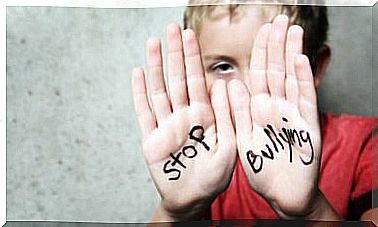Symptoms Of Post-traumatic Stress Disorder (PTSD)

Post-traumatic stress disorder can be extremely disabling. You should see a doctor if you recognize any of these symptoms, either in yourself or in someone close to you.
Post-traumatic stress disorder, also called PTSD, is a mental disorder that some people experience after being exposed to a traumatic event. It can be natural disasters, wars, accidents, assaults, kidnappings, abuses, etc.
Almost all people get some reaction when they have been in a traumatic situation. Therefore, one is extra vigilant in the weeks after the incident. One can also be scared and insecure about it.
It is an acute reaction to stress. Fortunately, most people recover naturally after processing their trauma. But some do not handle it properly and continue to be anxious even after they have come to safety.
What are the symptoms of post-traumatic stress disorder?
All people respond differently to a traumatic event, but there are many symptoms that recur. Therefore , the following signs must be present for at least a month, and cause severe discomfort before one can diagnose someone with PTSD:
- Flashbacks
- Evasive behavior
- Disorders of mood and cognition
- Reactive behavior
Next, we will take a closer look at each of these symptoms.

Flashbacks
- Recurring, frightening memories
- Nightmares
- Intense and chronic mental discomfort
- Physiological reactions such as hyperventilation, indigestion, extreme fatigue or soreness in the muscles
Avoidant behavior in post-traumatic stress disorder
- Ignoring memories, thoughts or feelings that have to do with the traumatic event
- That one avoids any human being, place, activity or situation that triggers memories of the traumatic experience
Disorders of mood and cognition
- Difficulty remembering important details about the traumatic event
- Unclear feelings of shame
- A negative, emotional state
- Lack of interest in activities that one previously enjoyed
- The feeling of being detached from the outside world
Reactive behavior
- Increased irritability
- Self-destructive behavior
- Extreme vigilance
- Experience
- Difficulty concentrating
- Difficulty sleeping
In addition, a person with PTSD may have the following dissociative symptoms:
- Depersonalization: When a person does not feel that he or she belongs in his or her own body.
- Derealization: When a person has the feeling that what they have experienced is not real.
Why do some people experience PTSD while others do not?
As we mentioned at the beginning, most people recover from a traumatic event of their own. There are various reasons why some develop the disorder and others do not. There are several factors that increase the risk.
In general, the most important are these:
- First, to be a woman. PTSD affects twice as many women as men.
- Past or present mental disorders or substance abuse.
- Having been exposed to one or more traumatic events in childhood.
- A low level of serotonin.
- To have witnessed wounded or dead people.
- A panic attack during or just after the incident.
- Having to deal with the loss of a loved one, physical pain or injury, loss of work or housing due to the incident.
- Living near the traumatic event.
- Lack of emotional support.
- And as the last thing to feel helpless or extremely scared.
As you can see, a combination of some of these factors can increase the intensity of post-traumatic stress in a person. Thus, experiencing one of the above factors is not the same as experiencing most of them.
Treatment of post-traumatic stress disorder
As with most mental disorders , there is also a treatment for PTSD. In fact, there are various methods that can improve the patient’s quality of life.
Cognitive behavioral therapy
Cognitive behavioral therapy is one of the latest, documented solutions for the treatment of PTSD. It is always best to get this treatment from an experienced professional.
But here is a basic listing of the most common aspects of this type of treatment:
- Cognitive restructuring: A person learns to see through his irrational thoughts about what happened and replaces them with some more realistic ones.
- Exercises in relaxation techniques. These techniques are essential for a person to better manage his anxiety. Among other things, you can learn to train deep breathing, Jacobson’s progressive muscle relaxation, meditation, Tai Chi and visualization.
- Exposure therapy : Once the patient has regained some control over his or her anxiety, it may be effective to expose him or her to some of the stimuli that were the cause of the trauma.
- Process-based cognitive therapy (CPT): This treatment mixes parts of cognitive therapy with theories of information processing.

Support groups
This type of group can be very beneficial for people with PTSD, especially if there is a shortage of support and understanding in their immediate environment. That way, it will be easier to put the pain into words if people meet and share their experiences.
It is easier to put things in perspective and learn from other people who have been through similar experiences.
EMDR (Eye Movement Desensitization and Reprocessing)
This technique was developed in the 80s by the neurologist, Francine Shapiro. It has been very beneficial for millions of people with PTSD.
In short, the method aims to evoke a series of eye movements and sonic stimuli. The good thing about it is that it helps to reduce the effect of trauma by providing a better processing of the experience. In addition, it helps to replace negative thoughts and feelings with some more beneficial ones.
Medicine for post-traumatic stress disorder
Lastly, if necessary, SSRIs (Selective Serotonin Reuptake Inhibitor) can reduce the intensity of the symptoms of PTSD as well as relieve depression. However, you must remember that these funds must be prescribed by a doctor and you must follow a certain schedule when you stop taking them.
Conclusion on PTSD
Although the symptoms of post-traumatic stress disorder are difficult to manage, most people who go into treatment recover from it. In such a way that they eventually become able to remember what happened without feeling overwhelmed by fear and anxiety.
Overall, the memory of a traumatic event never goes away, and the therapy does not make a person forget it. But it can enable them to detach themselves from the past and turn the traumatic memory into a useful experience.









